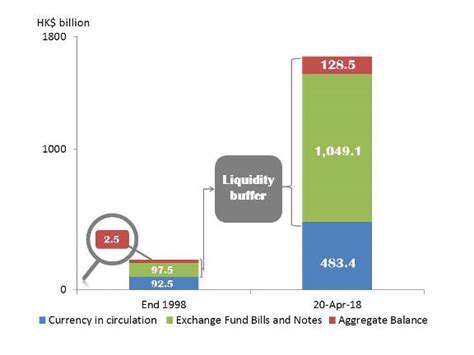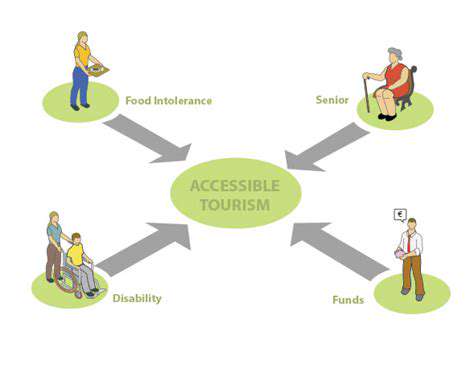Planning a Family Ski Vacation
Factors to Consider When Choosing a Ski Resort
When planning a family ski trip, the choice of ski resort is crucial. Consider factors like the experience level of your family members, the ages of the children, and the overall atmosphere you're looking for. A beginner-friendly resort with plenty of gentle slopes and kid-focused activities might be ideal for families with young children, while a more challenging resort with advanced terrain could be better suited for experienced skiers and snowboarders. Think about what kind of amenities you prioritize, such as childcare options, restaurants, and après-ski activities, and tailor your destination selection accordingly.
Budget is another important factor. Ski resorts vary significantly in price, from affordable options to luxurious experiences. Determine how much you're willing to spend on lodging, lift tickets, and other activities. Researching different resort packages and deals can help you find the best value for your money while still ensuring a memorable family vacation. Comparing prices across various resorts, including potential transportation costs, can help you make an informed decision.
Slope Variety and Terrain for All Abilities
A key aspect of choosing a ski resort is the variety of slopes available. Consider the different skill levels within your family. Look for a resort that offers slopes suitable for beginners, intermediates, and advanced skiers and snowboarders. This ensures everyone in the family can enjoy the experience at their own pace and skill level. Researching the resort's terrain map and checking out reviews from other families can give you a good idea of the slope variety and accessibility for different skill levels.
Exploring the resort's varied terrain is essential. A challenging black diamond run might be exciting for seasoned skiers, but it could be daunting for beginners. A well-rounded resort will offer a blend of beginner runs, gentle slopes, and more challenging terrain to cater to different skill levels. A combination of gentle slopes, intermediate runs, and advanced terrain ensures a satisfying experience for everyone, regardless of their skiing prowess.
Amenities and Activities for the Whole Family
Beyond the slopes, consider the range of amenities and activities offered at the resort. Does the resort have a dedicated kids' ski school or childcare services? Are there après-ski activities, such as ice skating rinks or family-friendly restaurants, to keep everyone entertained? Investigating these factors will help you choose a resort that caters to the interests of everyone in your family, ensuring a fun and engaging vacation for all members. A resort with a vibrant atmosphere and engaging activities will enhance the overall experience for families.
Location and Accessibility
The location of the ski resort and its accessibility are important factors to consider. How far away is the resort from your home? How easy is it to travel to and from the resort, considering factors such as driving time, parking availability, and transportation options? Consider the resort's proximity to other attractions or activities that you might want to include in your vacation plan. A convenient location simplifies travel arrangements and allows for more time spent enjoying the ski experience.
Budget and Packages
Ski resort costs can vary significantly. Research different resort packages to see if they offer bundled deals on lodging, lift tickets, and other activities. Compare prices for different accommodations, from cozy cabins to luxurious hotels, to find options that fit your budget. Look for discounts, deals, and promotions to make the most of your vacation budget. Carefully considering the costs associated with each aspect of your trip will help you make an informed decision about your family's ski vacation.
Budgeting for a Thrilling Ski Getaway: Making the Most of Your Money

Planning Your Trip
Before you even think about hitting the slopes, meticulous planning is key to a successful and stress-free ski trip. This involves researching your desired destinations, considering the time of year for optimal weather and crowds, and booking flights and accommodations well in advance. Budgeting for flights and lodging is crucial to avoid overspending on your trip. Thorough research will help you find the best deals and avoid any unpleasant surprises later on.
Consider the potential costs of lift tickets, ski rentals, and any other activities you plan on doing. This will help you create a realistic budget that you can stick to throughout your trip. Creating a detailed itinerary will enable you to stay on top of your expenses and avoid unnecessary costs. A well-planned trip is a more enjoyable trip.
Accommodation Costs
Accommodation costs can vary significantly depending on the type of lodging you choose and the location. Luxury hotels and resorts often come with higher price tags than budget-friendly options like vacation rentals or hostels. Consider your travel style and budget when making your choice. Look for deals and discounts to save money on accommodation.
If you're traveling with a group, consider sharing accommodation. This can help significantly reduce the overall cost of your trip. Alternatively, if you're comfortable with it, consider staying in a less luxurious accommodation option. This could mean staying in a hostel or a vacation rental, which can help you save money on your trip.
Lift Tickets and Ski Pass Options
Lift tickets are an essential part of any ski trip. They can be expensive, so it's vital to research different options to find the best value for your money. Consider purchasing a multi-day lift ticket to save money compared to buying individual tickets each day.
Ski resorts often offer various pass options, from single-day passes to multi-day passes and even season passes. Comparing these options and understanding the value proposition is crucial for maximizing your savings. Look into different ski pass options to see which one best fits your needs and budget.
Food and Beverage Expenses
Food and beverage expenses can easily add up on a ski trip, especially if you're eating out frequently. Plan to have some meals in your accommodation or pack some snacks to avoid spending too much on restaurant meals. This will help you keep your costs down. Dining out at restaurants can be costly, especially during peak season.
Consider bringing some snacks and drinks to save money. This can help you reduce your spending on food and beverages. Look for affordable dining options like cafes and quick-service restaurants. Pack some snacks to enjoy between runs.
Activities and Entertainment
Beyond the slopes, consider the additional activities and entertainment you might want to enjoy during your ski trip. These could include snowshoeing, ice skating, or visiting local attractions. These activities can add to the overall cost of your trip. Research the activities and entertainment options available in your chosen ski destination.
Factor in the cost of these activities when creating your budget. Consider whether these are truly essential to your enjoyment of the trip and if you're willing to adjust your budget accordingly. Consider activities that are free or low-cost to reduce your expenses. Look for free or affordable entertainment options to enjoy the destination without breaking the bank.
Planning Your Itinerary: A Step-by-Step Guide to Maximize Your Family Fun

Defining Your Destination
Before diving into the specifics of your itinerary, you need to clearly define your destination. Are you looking for relaxation on a pristine beach, adventure in a bustling city, or cultural immersion in a historical landmark? Understanding your desired experience is crucial for shaping a fulfilling trip. Consider what activities you enjoy, what kind of atmosphere you prefer, and what your budget allows. This initial step will guide your choices and ensure your trip aligns with your expectations.
Researching potential destinations and narrowing down your options is also important. Look into different regions, cities, or towns that might suit your needs. Read travel blogs, articles, and reviews from other travelers to gain insights and form a better understanding of what each location offers. Thorough preparation will increase the likelihood of a positive experience.
Budgeting Your Trip
Creating a realistic budget is vital for successful trip planning. Consider all potential expenses, including flights, accommodation, food, activities, and transportation. Research prices for flights, hotels, and attractions in advance to get a better idea of the total cost. Tracking your spending habits will help you estimate your budget accurately. This will prevent any unpleasant surprises during your trip.
Be sure to factor in potential unforeseen expenses. Unexpected circumstances can arise, and having a buffer in your budget can alleviate stress and allow you to make necessary adjustments.
Transportation Options
Choosing the right transportation method is crucial for a smooth and efficient trip. Consider the distance between locations, your travel style, and your budget. If you're traveling long distances, flying might be the fastest option, but trains or buses can be more affordable and offer a different perspective. Evaluate the various transportation options available to find the best fit for your needs. Consider the time commitment associated with each mode of transport.
Researching transportation routes and schedules is essential. Knowing the travel times and potential delays will help you to create a more flexible and adaptable itinerary. This will make sure you have a backup plan in case of unforeseen circumstances.
Accommodation Selection
Selecting the right accommodation is crucial for a comfortable and enjoyable trip. Consider your budget, the location you've chosen, and the type of experience you desire. If you're traveling with a group, consider options like apartments or vacation rentals that can accommodate everyone. Choosing the right accommodation can significantly impact your overall experience. Research available options and read reviews from previous guests to make an informed decision.
Look into amenities and services that are important to you. Consider factors such as room size, amenities, and location when making your final decision. This can make the difference between a pleasant and an unpleasant trip.
Activities and Experiences
Planning activities and experiences is key to a memorable trip. Consider your interests and the attractions available in your chosen destination. If you're interested in history, research local museums and historical sites. If you enjoy outdoor activities, consider hiking trails or scenic drives. Plan activities that will appeal to your interests. Don't overschedule yourself; leave room for spontaneity and unexpected discoveries.
Book activities and tours in advance, especially during peak seasons, to avoid disappointment. This will ensure that your chosen activities are available for you.
Contingency Planning
Creating a contingency plan is a crucial part of trip planning. Anticipate potential problems, such as flight delays, weather changes, or unexpected events. Have backup plans for alternative routes, accommodations, or activities. This will help you stay calm and flexible during the trip. It will also allow you to adjust to unforeseen circumstances without derailing your entire experience.
Have emergency contact information readily available and know how to access local support services if needed. This can greatly reduce stress during your journey.
Making Memories That Last a Lifetime: Tips for a Smooth Family Ski Trip

Creating Unforgettable Experiences
Making lasting memories is about more than just snapping photos; it's about immersing yourself in the moment and engaging all your senses. Experiences, whether big or small, often leave a more profound impact than material possessions. Think about the feeling of the warm sand between your toes as you build a magnificent sandcastle on the beach, the taste of freshly baked bread wafting from a quaint bakery, or the laughter shared with loved ones during a picnic under a blanket of stars. These sensory details create a rich tapestry of emotions and associations that become woven into the fabric of your memory.
Focusing on shared experiences with loved ones is a powerful way to create lasting memories. Cooking a meal together, playing a board game, or simply engaging in meaningful conversations can forge stronger bonds and create cherished recollections. These moments of connection, often overlooked in our fast-paced lives, have the potential to become the most precious treasures we hold. It's in these shared moments that we truly connect with those we love, and the memories we create together are often the ones that stay with us longest.
Preserving Memories for Generations
Creating lasting memories is only half the battle; preserving them is equally important. Documenting these experiences through photographs, videos, or even handwritten journals can help solidify the memories and provide a tangible connection to the past. These records can be treasured by future generations, allowing them to understand and appreciate the values and experiences that shaped their ancestors' lives.
Careful organization and preservation of these memories are crucial for ensuring their longevity. Storing photographs in albums, creating scrapbooks, or digitizing memories onto a secure storage device can safeguard these precious moments for years to come. This process not only ensures the preservation of these memories but also allows us to share them with future generations, fostering a deeper understanding and appreciation of our collective history.
Writing letters or creating personal narratives can also be a powerful way to preserve memories. These written accounts offer a unique perspective, capturing not just the events but also the emotions and feelings associated with them. These personalized stories can be passed down through families, offering valuable insights into the past and connecting us with our heritage.
The Power of Storytelling
Sharing stories of past memories is a powerful way to not only re-experience those moments but also to pass on important life lessons and values. By recounting our experiences, we engage our minds and emotions, allowing us to revisit the feelings and emotions connected to those memories. This process of storytelling strengthens our connections with others and fosters a sense of shared history.
These stories can inspire, educate, and entertain future generations, providing valuable insights into the world and the values we hold dear. By sharing our personal narratives, we create a legacy that extends beyond our own lifetimes. These stories can become a cornerstone of family history, connecting us to our roots and shaping the narratives of those who come after us.
Recalling and sharing memories, whether through spoken words or written accounts, is a powerful tool for healing, understanding, and connecting with ourselves and with others. It allows us to process past experiences, learn from our mistakes, and appreciate the journey we have taken.







![How to Pack a Carry On Only [Minimalist Guide]](/static/images/27/2025-05/AccessoriesandDocuments3AKeepingitCompactandOrganized.jpg)
